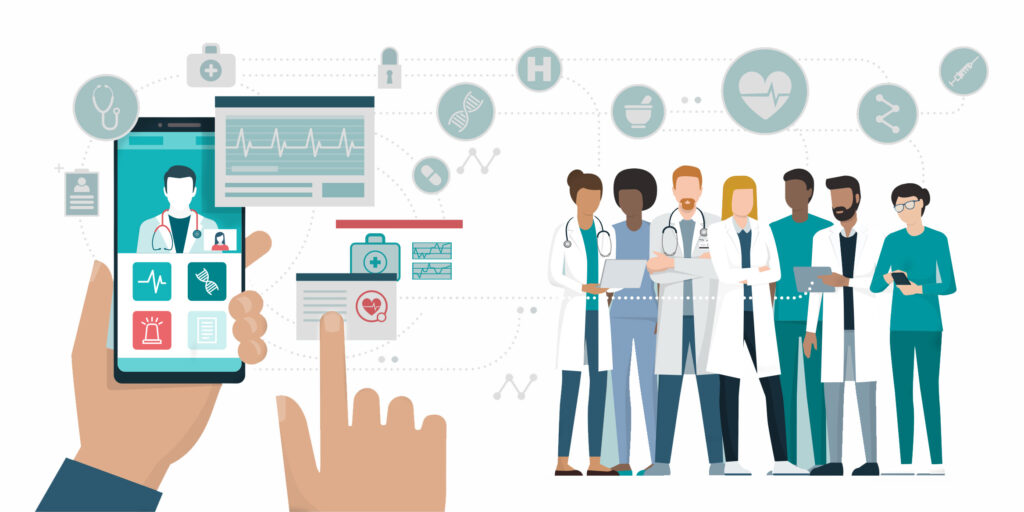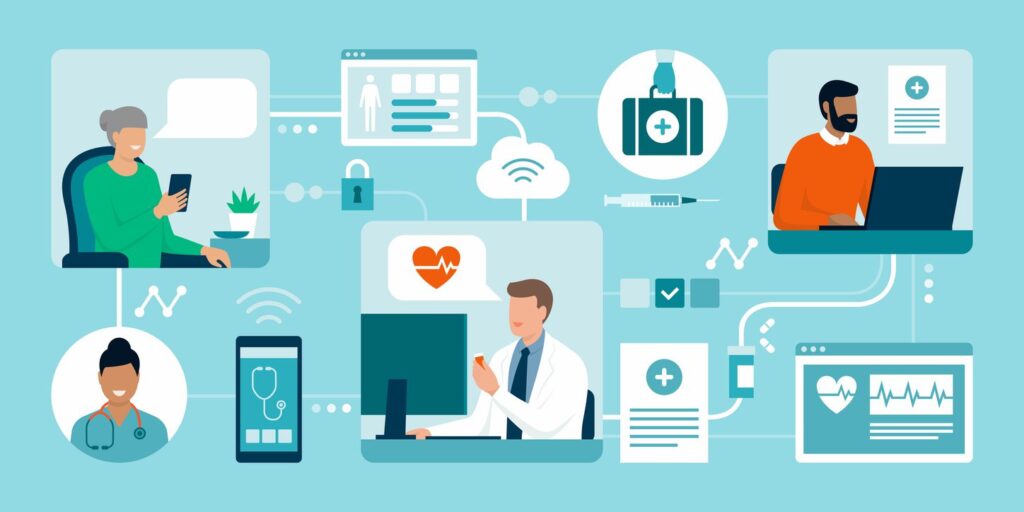Blog
The Rise of Digital Health Tools: A Guide for Beginners
The healthcare industry is undergoing a digital transformation, with new technologies reshaping how we monitor, manage, and improve our health. Digital health tools, ranging from wearable devices to telemedicine apps, are becoming indispensable for individuals and healthcare providers alike. If you’re new to this space, understanding how these tools work and their benefits can empower you to take control of your health journey. In this guide, we’ll explore the rise of digital health tools, their types, and how to get started.
1. What Are Digital Health Tools?
Digital health tools encompass a broad range of technologies designed to enhance healthcare delivery and personal health management. These tools leverage innovations such as mobile apps, wearable devices, artificial intelligence (AI), and cloud-based platforms to make healthcare more accessible, efficient, and personalized.

Key Features of Digital Health Tools:
- Data Collection: Gather health metrics like heart rate, activity levels, and blood pressure.
- Analysis and Insights: Use algorithms to provide actionable recommendations.
- Connectivity: Sync with smartphones, apps, and healthcare systems for seamless integration.
- Accessibility: Allow users to monitor health anytime, anywhere.
2. Why Digital Health Tools Are Gaining Popularity
The rise of digital health tools is driven by several factors, including advancements in technology and growing demand for personalized healthcare solutions.
Benefits of Digital Health Tools:
- Convenience: Access health information and support without visiting a clinic.
- Proactive Care: Monitor health metrics in real-time to detect issues early.
- Personalization: Receive tailored insights and recommendations based on individual data.
- Cost Efficiency: Reduce medical expenses by preventing complications and minimizing hospital visits.
- Empowerment: Take charge of your health with tools that provide transparency and understanding.
3. Types of Digital Health Tools
There are numerous types of digital health tools available, each catering to different needs and goals.
1. Wearable Devices
Wearable health devices track metrics like physical activity, sleep, and heart rate. Examples include:
- Fitness Trackers: Monitor steps, calories burned, and workout performance.
- Smartwatches: Provide advanced metrics like ECG and blood oxygen levels.
- Smart Rings: Compact devices for sleep tracking and stress management.
Popular Devices: Fitbit, Apple Watch, Oura Ring.
2. Mobile Health Apps
Mobile apps are a cornerstone of digital health, offering tools for fitness tracking, mental health support, and chronic disease management.
- Fitness Apps: Guide users through workouts and track progress.
- Nutrition Apps: Log meals, count calories, and plan diets.
- Mental Health Apps: Provide meditation, mindfulness, and stress relief exercises.
Popular Apps: MyFitnessPal, Headspace, Calm.
3. Telemedicine Platforms
Telemedicine apps enable remote consultations with doctors, therapists, and other healthcare professionals.
- Virtual Appointments: Access healthcare from the comfort of home.
- Prescription Management: Request and renew medications online.
Popular Platforms: Teladoc Health, Amwell, Zocdoc.
4. Home Health Monitoring Devices
These tools allow users to track vital signs and manage chronic conditions.
- Blood Pressure Monitors: Measure and record blood pressure readings.
- Glucose Monitors: Track blood sugar levels for diabetes management.
- Pulse Oximeters: Monitor oxygen saturation in the blood.
Popular Devices: Omron Blood Pressure Monitor, Dexcom G7, Wellue O2Ring.
5. AI-Powered Tools
AI-driven health tools analyze data and provide recommendations to improve health outcomes.
- Virtual Health Assistants: Offer personalized tips and reminders.
- Symptom Checkers: Suggest potential conditions based on user input.
Popular Tools: Babylon Health, Ada Health.
4. How to Get Started with Digital Health Tools
Step 1: Identify Your Needs
Determine your primary health goals, such as:
- Tracking fitness and activity levels.
- Managing a chronic condition.
- Improving mental health or reducing stress.
Step 2: Choose the Right Tools
Select tools that align with your needs and preferences. Consider factors like ease of use, compatibility with your devices, and cost.
Step 3: Set Up and Sync
- Install apps and pair devices with your smartphone or computer.
- Input basic health information to personalize your experience.
Step 4: Track and Monitor
Use the tools consistently to gather data and track progress over time.
Step 5: Act on Insights
Leverage the insights provided by these tools to make informed decisions about diet, exercise, and lifestyle changes.
5. Benefits of Digital Health Tools for Beginners
For those new to digital health, these tools offer an accessible entry point into proactive healthcare.

1. Easy Learning Curve
Most tools are designed with user-friendly interfaces, making them intuitive even for beginners.
2. Real-Time Feedback
Immediate insights help users understand how their daily habits impact their health.
3. Motivation and Accountability
Features like goal-setting, reminders, and progress tracking encourage consistency.
4. Integration with Healthcare Providers
Many tools allow data sharing with doctors, enabling better diagnosis and treatment plans.
6. Challenges and Limitations
While digital health tools are transformative, they come with certain challenges:
- Data Privacy Concerns: Ensure tools comply with privacy standards like HIPAA to protect sensitive information.
- Device Accuracy: Consumer-grade tools may not always match clinical-level precision.
- Over-Reliance: Avoid depending solely on digital tools and maintain regular medical checkups.
- Cost Barriers: Some tools, especially premium wearables or subscription apps, may be expensive.
7. The Future of Digital Health Tools
Digital health is evolving rapidly, with advancements poised to make these tools even more impactful.
Upcoming Innovations:
- AI-Powered Diagnostics: More accurate analysis of health data for early detection of diseases.
- Wearable Biosensors: Continuous monitoring of multiple health metrics, such as hydration and glucose.
- Telehealth Expansion: Broader access to remote healthcare, even in underserved areas.
- Personalized Medicine: Tailored health plans based on genetic and lifestyle data.
As these technologies mature, digital health tools will become even more integral to everyday healthcare.
8. Tips for Beginners
To make the most of digital health tools, follow these tips:
- Start Small: Begin with one or two tools and gradually add more as you get comfortable.
- Research: Read reviews and consult healthcare professionals before purchasing devices or apps.
- Focus on Consistency: Use the tools daily to build habits and gather meaningful data.
- Combine with Professional Care: Digital tools complement, not replace, medical advice.
Conclusion
The rise of digital health tools marks a new era in personal healthcare, offering convenience, accessibility, and empowerment. Whether you’re looking to track your fitness, manage a chronic condition, or simply live healthier, these tools can help you achieve your goals.
As a beginner, starting your journey with digital health might seem daunting, but the benefits far outweigh the learning curve. By choosing the right tools and incorporating them into your routine, you can take control of your health and unlock a healthier, more informed future.

